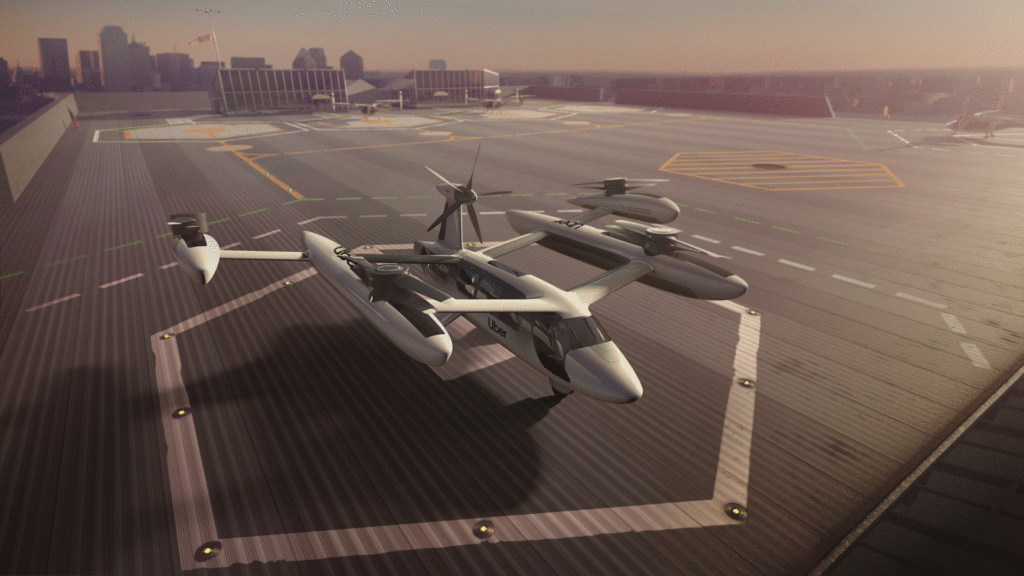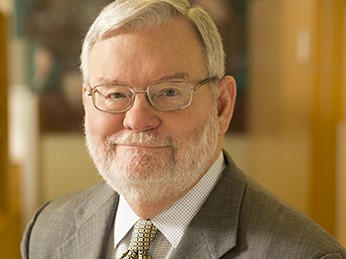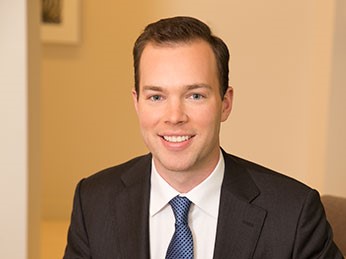
The future is upon us, and in some ways it is exactly as we dreamed it: virtual reality, delivery drones and, yes, flying cars. (Well, and pandemics too, but this article steers clear of that dystopian nightmare.)
As Uber’s CEO Dara Khosrowshahi explains in introducing Uber Elevate (the company’s flying car initiative), “We’re living in cities where people live in three dimensions in skyscrapers, they work in three dimensions in skyscrapers, and you have a transportation grid that’s in two dimensions. That transportation grid will not be able to keep up with three-dimensional life.”
Uber’s answer? A network of flying taxis utilizing that third dimension. Uber’s vision is portrayed in videos and graphics at its website.

North Texas is ground zero for flying car innovation. Last September, Uber Elevate announced plans to situate the first test site for its fleet of all-electric flying taxis at Frisco Station, one block north of the Dallas Cowboys’ practice facilities. As described on its website and in a detailed whitepaper, Uber envisions a web of a few large Veriports (designed to park, charge and service a dozen vehicles) and several strategically located Veristops (designed to accommodate takeoff and landing for one or two vehicles). These stops could be located atop a downtown office tower or adjacent to an airport or a highway interchange.
The goal is for customers to use the Uber app to schedule a trip that could include taking an Uber car to one of the stops, being flown by Uber Elevate to a stop close to their destination and then, if necessary, taking another Uber car to the final destination. The company claims a simple trip from Frisco Station to DFW Airport would take eight minutes by air (Uber Elevate), rather than 70 minutes by ground (UberX).
Uber Elevate plans to begin testing this year and has already completed construction of the very first Veristop atop Frisco Station. And Uber is not alone. Companies like Bell Helicopter, Boeing, Embraer and Airbus are also spending resources to secure their slices of the Electric Vertical Take-off and Landing Vehicle (eVTOL) industry. Other businesses and property owners may want to join the fun by leasing sites or providing ancillary services.
The final touches are being put on the tech, but as is often the case, the speed of creativity and technological innovation has outpaced legal regulation. Serious legal questions remain regarding flightpath routing and other issues. In other words, where are these flying cars going to go, and how are they going to get there? While the shortest distance between two points is generally a straight line, that route might not please those who live and work under the flightpath.
Resolving the emerging legal issues is important for diverse stakeholders. For Uber and other business seeking to profit from eVTOL opportunities, proper legal analysis could be the difference between ascension and failure to launch. For local governments and community planners, it could be the difference between organized, coordinated development and chaos. For homeowners, it could be the difference between a peaceful residential neighborhood and an aerial interstate. And for all of us willing to pay a premium to dodge traffic, it could be the difference between planning our commutes around rush hour and leaving the office when we so choose.
Routes will ultimately be plotted as a result of input from three core groups of stakeholders: Uber and other eVTOL companies; federal, state and local governments; and impacted residents and property owners. This article focuses on the latter two, as eVTOL companies’ preferred flightpaths are easily predicted – straight lines from point A to point B, whenever someone wants a ride. Determining the parameters of flightpath regulation requires consideration of existing airspace rules, federal preemption, constitutional takings, common law nuisance claims and a host of other issues beyond the scope of this brief article.
Federal or Local Regulation?
A threshold question is the scope and effect of federal preemption – is there room for local influence, or is the field entirely controlled by the federal government? The assessment is two-part: (1) are flightpath or other restrictions related to the “safety and well-being” of citizens, a lawmaking field traditionally occupied by the states, and (2) does any federal statute expressly preempt state or local flightpath restrictions or other rules?

Traditional State Regulation?
The analysis begins with the Federal Aviation Act. Under the current regulatory scheme (which was not developed with flying cars in mind), Uber would likely file for registration as an on-demand commercial operator for intrastate passenger service under 14 CFR Part 380. That certificate will impose certain noise and flight restrictions, which would discourage heavy traffic in quiet residential neighborhoods. More detailed regulations (and possibly new legislation) will likely be adopted to control many aspects of the emerging transportation model.
The FAA, and federal law generally, does not necessarily prohibit states from exercising their “police power.” The Supreme Court has repeatedly recognized a presumption against federal preemption when state-level regulation concerns the health and well-being of the state’s citizens. According to Rice v. Santa Fe Elevator Corp., the court will “start with the assumption that the historic police powers of the States were not to be superseded by the Federal Act unless that was the clear and manifest purpose of Congress.”
This presumption is particularly strong when Congress legislates in a field “the States have traditionally occupied.” According to Medtronic, Inc. v. Lohr, Citizens’ health and safety are “primarily and historically … matter[s] of local concern” and therefore states have “great latitude” to protect the “lives, limbs, health, comfort, and quiet of all persons.” However, aviation safety is patently not a field “traditionally occupied” by the states. The Third Circuit in Abdullah v. American Airlines, Inc. held “the entire field of aviation safety” is preempted by federal law.
Some room remains for local regulation. In Skysign Int’l., Inc. v. City & County of Honolulu, a provider of aerial advertising brought suit against the local authorities, seeking a declaration that federal law preempts Honolulu from regulating navigable airspace and, more particularly, the company’s attaching signs to the bottom of airplanes. The Ninth Circuit sided with Honolulu, reasoning that “advertising is an area traditionally subject to regulation under the states’ police power, and … federal law does not displace Honolulu’s regulatory authority over advertising absent a clear statement of the federal intent.”
In sum, unless state and municipal restrictions on eVTOLs are shown to relate to citizens’ safety or well-being, they are at greater risk of being preempted by federal law. Even regulations meeting that test, however, can be expressly preempted by a federal statute.
Express Federal Preemption?
The second question can only be answered by identifying the exact language of the contemplated regulation and comparing it to federal law. Although the FAA does not expressly preempt state-level restriction of commercial or private flights, the Airline Deregulation Act prohibits states or their political subdivisions from enacting or enforcing any “law, regulation, or other provision … related to a price, route, or service of an air carrier.”
A recent case in the Western District of Texas is instructive. In Air Evac EMS, Inc. v. Sullivan, an air ambulance company brought an action for declaratory and injunctive relief against the Texas Commissioners of Insurance and Workers’ Compensation, alleging the ADA preempted the Texas Workers’ Compensation Act insofar as it limited the amount air ambulance companies could recover for services provided to patients covered by the TWCA. The court held the ADA preempted TWCA’s restriction of rates.
ADA preemption is not unlimited. In America Airlines, Inc. v. Wolens, the Supreme Court held that, consistent with the ADA’s purpose of promoting competition within the airline industry, the act preempts only those state regulations relating to “bargained-for” aspects of air carrier service.
If read expansively, the ADA could empower federal regulators to assert their power over state and municipal governments seeking to impose restrictions on eVTOLs. If read more narrowly, as long as flightpath or other restrictions apply equally to competitive eVTOL companies, such restrictions might not impinge on those aspects travel consumers “bargain for” and therefore might not violate the ADA’s underlying mission of promoting competition.
Under this legal framework, states and municipalities will be challenged to relate proposed flightpath or other restrictions to their police power without treading on the federal government’s exclusive ability to determine rates, routes and services. Local governments and other organizations would be well-advised to work with elected representatives and federal regulators to influence drafting of the statutes or detailed regulations that will ultimately govern many aspects of the “flying cars” market.
Property Owners’ Complaints
To the extent federal law does not completely preempt common law tort or constitutional claims, there are two broad categories of claims that could be asserted in court by disgruntled property owners seeking to reroute or otherwise restrict eVTOL flights: inverse condemnation (which can be brought only against governmental entities); and nuisance (which, for the most part, can be brought only against private companies).
Inverse Condemnation
In Texas, claims for compensation of damages attributed to actions taken by governmental entities arise under the “takings clause,” Art. I, § 17 of the Texas Constitution, which the Texas Supreme Court held in City of Dallas v. Jennings prohibits private property from being “taken, damaged, or destroyed for and applied to public use without adequate compensation being made.” This provision, which parallels language in the federal constitution’s Fifth Amendment, would be triggered, for example, if a governmental body condemned private property for use as public “ports” for flying cars. Where the government does not initiate statutory condemnation proceedings, aggrieved landowners that believe governmental actions have effectively “taken” their property can seek compensation through an “inverse condemnation” lawsuit.
In Jennings, the Texas Supreme Court addressed a claim that Dallas should be required to compensate homeowners for damages attributed to the City’s efforts to unclog a sewer main, which resulted in flooding their home with raw sewage. The Court held Dallas had not effected a taking because it did not know that a specific act was causing identifiable harm or that the specific property damage was “substantially certain to result from an authorized government action.”
Even if property owners challenging government-approved eVTOL flightpaths could satisfy this standard, an inverse-condemnation claim arising from noise complaints might be foreclosed by the “community damage rule,” as articulated in Felts v. Harris County. Felts involved claims that highway noises emanating from a four-lane parkway in Cypress, Texas, caused a significant impact on adjacent homeowners and was substantially interfering with the use and enjoyment of their homes. The court held the homeowners were not entitled to compensation because the alleged injury is “suffered by the community in general,” even if “some damages may be greater if the property is in closer proximity to the roadway.”
The Felts court distinguished a line of cases recognizing a takings claim based on government-authorized aircraft overflights, on the ground that those cases “involve the ‘taking’ of air easements rather than interferences attributable to neighboring public works.” The court held in City of Austin v. Travis County Landfill Co. that compensation in such cases requires proving “the overflight-related effects … directly, immediately, and substantially impact the property’s surface so that it is no longer useable for its intended purpose.”
Nuisance Claims
Property owners might also consider a private nuisance claim against the relevant eVTOL company. According to Crosstex N. Tex. Pipeline, L.P. v. Gardiner, a private nuisance “is a condition that substantially interferes with the use and enjoyment of land by causing unreasonable discomfort or annoyance to persons of ordinary sensibilities attempting to use and enjoy it” (emphasis added). Multiple nonexclusive factors may be used to assess whether the interference is substantial and objectively unreasonable.
The determinative factor in assessing liability for creating a nuisance is the defendant’s conduct, including intent and knowledge of potential harm. Nuisance liability can arise from negligent or intentional conduct and (in rare circumstances) from strict liability. Federal District Judge Sam Lindsay in Reed v. LKQ Corp. recently found a salvage yard liable for intentional private nuisance in a suit filed by a neighboring homeowner because, despite learning of the harms caused by dust, debris and noise, the salvage yard continued its operation without adequately abating the harms.
Jennings states that potential remedies for a private nuisance include damages or injunctive relief. While the elements of a nuisance claim and the amount of damages are generally fact issues, according to Hot Rod Hill Motor Park v. Triolo, injunctive relief is the province of the court.
Given the limitations on these causes of action, it seems unlikely property owners will be able to prevent government-approved eVTOL flights over their homes based on the principles of inverse condemnation or nuisance. Instead, concerned property owners might need to be proactive, communicating with local, state and federal legislators and regulators to encourage ideal routing and other protections on the front end.
Conclusion
For general counsel and general practitioners alike, understanding and advising clients about eVTOL flightpath restrictions requires deep understanding of less-than-analogous case law, close analysis of statutory intent and careful counseling. The law is still very much unsettled as courts have yet to address this truly innovative technology. Nevertheless, the importance of eVTOL flightpath restrictions will only become more pronounced as the technology becomes increasingly integrated into everyday commercial and private transportation. As transportation adapts to new realities, lawyers will be required to do the same.
Lyndon Bittle is a partner at Carrington Coleman partner who has represented local governments on a wide range of matters over the years, as well as policyholders in insurance coverage disputes and other clients in business litigation and appeals. He is board certified in civil appellate law and a fellow in the American College of Coverage Counsel.
Evan Kirkham is an associate at Carrington Coleman with a special interest in cutting-edge technology and associated legal issues. He is part of the firm’s securities and business litigation practices and a founding member of the virtual tokens and blockchain technology group.
